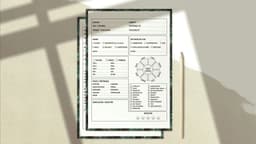Understanding Bubble Sort Algorithm in C
Bubble sort is a simple sorting algorithm that repeatedly steps through the list to be sorted, compares each pair of adjacent items, and swaps them if they are in the wrong order. The pass through the list is repeated until no swaps are needed, which indicates that the list is sorted. Despite its simplicity, bubble sort is not the most efficient sorting algorithm for large lists due to its O(n^2) time complexity. Nonetheless, understanding how bubble sort works in C can provide valuable insights into sorting algorithms in general.
How Bubble Sort Works
To understand how bubble sort works, let's consider an example list of numbers: [5, 3, 8, 2, 1]. We begin by comparing the first two elements (5 and 3). Since 5 is greater than 3, we swap the elements, resulting in [3, 5, 8, 2, 1]. We continue this process, comparing and swapping pairs of elements until the list is sorted in ascending order.
Let's walk through the steps of the bubble sort algorithm in C:
C
In the above C code snippet, the bubbleSort function implements the bubble sort algorithm. It iterates through the array and compares adjacent elements, swapping them if necessary. The main function initializes an array and calls the bubbleSort function to sort the array.
Optimization Techniques
While bubble sort is straightforward, it can be optimized to reduce unnecessary comparisons and swaps. One common optimization is to introduce a flag that indicates whether any swaps were made during a pass through the list. If no swaps occur, the list is already sorted, and the algorithm can terminate early.
C
In the optimizedBubbleSort function above, the swapped flag is used to track whether any swaps were made in a pass through the list. If swapped is still zero after a full iteration, the array is sorted, and the algorithm terminates early.
Space and Time Complexity
The time complexity of the bubble sort algorithm is O(n^2), where n is the number of elements in the array. This is because the algorithm requires looping through the array and performing comparisons for each element.
The space complexity of bubble sort is O(1) since the algorithm only uses a constant amount of extra space for variables such as indices and temporary storage.
While bubble sort is not the most efficient sorting algorithm, especially for large datasets, it can be a good choice for small datasets due to its simplicity.
Other Sorting Algorithms
There are many sorting algorithms available, each with its advantages and disadvantages. Some commonly used sorting algorithms include:
- Selection Sort: Similar to bubble sort, but instead of swapping elements immediately, it finds the minimum element and places it in the correct position.
- Insertion Sort: Builds the final sorted array one element at a time, shifting elements as needed.
- Merge Sort: A divide-and-conquer algorithm that divides the array into smaller subarrays until each subarray is sorted, then merges them back together.
- Quick Sort: Another divide-and-conquer algorithm that selects a pivot element and partitions the array around the pivot.
Each sorting algorithm has its strengths and weaknesses, making it important to choose the right algorithm based on the specific requirements of the problem at hand.












